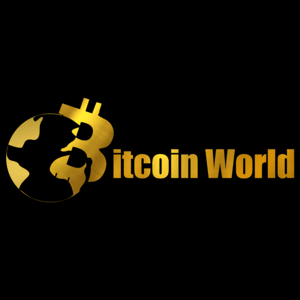MoonPay CEO Unveils Bold Future: Stablecoin Hint, Wallets Over Banks, DEXs Over CEXs
4 min read
The world of finance is constantly evolving, and the rise of Web3 is accelerating that change. Recent comments from Ivan Soto-Wright, the CEO of leading Web3 infrastructure company MoonPay, offer a fascinating glimpse into what the future might hold. His insights, shared during a recent interview, touch upon significant shifts, including the potential for a MoonPay stablecoin , the transformative role of crypto wallets future , and a predicted power dynamic shift in the world of trading: DEX vs CEX . Could a MoonPay Stablecoin Become a Reality? One of the most intriguing hints from Ivan Soto-Wright was the suggestion that MoonPay might be considering launching its own stablecoin. While details remain scarce, the implication is significant. As a company deeply embedded in providing infrastructure that connects fiat currency to crypto and vice-versa, a stablecoin could streamline many of MoonPay’s operations and offer new services to users and businesses alike. Why would a Web3 infrastructure provider like MoonPay enter the stablecoin arena? Stablecoins are crucial bridges between the volatile crypto market and traditional fiat currencies. They offer stability for payments, remittances, and acting as a safe haven within the crypto ecosystem during market downturns. For MoonPay, a proprietary stablecoin could: Simplify cross-border transactions. Reduce reliance on third-party stablecoin providers. Potentially offer unique features integrated with MoonPay’s existing services. Enhance liquidity and efficiency for users onboarding into Web3. While still speculative, the prospect of a MoonPay stablecoin underscores the growing trend of major crypto players exploring their own stable digital currencies to enhance their ecosystems. Are Crypto Wallets the Future of Banking? Perhaps the most ambitious prediction from the MoonPay CEO is that crypto wallets will eventually take the place of traditional bank accounts. This isn’t just about holding and sending cryptocurrency; modern crypto wallets are evolving rapidly into comprehensive financial hubs. Consider the capabilities of today’s advanced crypto wallets: Storing various cryptocurrencies and NFTs. Connecting to decentralized applications (dApps) for lending, borrowing, and trading. Earning yield through staking or DeFi protocols. Participating in governance of decentralized networks. Making payments directly to merchants. Compared to traditional bank accounts, crypto wallets offer potential advantages like: Greater control and ownership of assets (self-custody). Faster, often cheaper, transactions, especially internationally. 24/7 access to funds and services without intermediaries. Access to innovative financial products in DeFi. However, challenges remain for the crypto wallets future to fully replace banks, including regulatory clarity, ease of use for non-technical users, and protection against loss of private keys or scams. Nevertheless, the vision of wallets as the primary interface for managing personal finances aligns with the decentralized ethos of Web3. The Shifting Landscape: DEX vs CEX Ivan Soto-Wright also weighed in on the ongoing debate of DEX vs CEX , predicting that decentralized exchanges will eventually surpass centralized exchanges in prominence. Centralized exchanges (CEXs) like Binance or Coinbase currently dominate trading volume due to their user-friendliness, liquidity, and range of services. Decentralized exchanges (DEXs) like Uniswap or PancakeSwap operate on blockchain technology, allowing users to trade directly from their wallets without needing to deposit funds onto an exchange platform. This offers key benefits: Self-Custody: Users retain control of their private keys and assets. Censorship Resistance: Less susceptible to single points of failure or external censorship. Innovation: Often at the forefront of new token listings and DeFi protocols. Transparency: Transactions are recorded on the public blockchain. Despite these advantages, DEXs currently face hurdles such as higher complexity for new users, potential for higher transaction fees (gas fees), and sometimes lower liquidity for certain trading pairs compared to major CEXs. However, as Web3 infrastructure improves, and layer-2 scaling solutions reduce costs and increase speed, the user experience on DEXs is rapidly improving, potentially paving the way for them to overtake their centralized counterparts as predicted by Soto-Wright. What Does This Mean for Web3 Infrastructure? MoonPay’s core business is building the essential plumbing for Web3. These predictions from their CEO highlight the areas where this infrastructure is most needed. Facilitating seamless transitions between fiat and crypto (where a stablecoin could help), building robust and user-friendly wallet technology, and enabling efficient, liquid decentralized trading platforms are all critical components of a maturing Web3 ecosystem. Companies like MoonPay are at the forefront of building the tools that will make these predictions a reality. Actionable Insights from MoonPay’s Vision What can users and businesses take away from these insights? For Users: Explore the capabilities of modern crypto wallets beyond simple storage. Look into DEXs and understand how they differ from CEXs. Stay informed about potential stablecoin developments. For Developers: Focus on improving the user experience of DEXs and wallets. Innovate on solutions that bridge the gap between traditional finance and decentralized Web3. For Businesses: Consider how accepting crypto payments via wallets or integrating stablecoins could benefit your operations. Evaluate the infrastructure needed to interact with a more decentralized financial future. Conclusion: A Glimpse into a Decentralized Financial Future Ivan Soto-Wright’s comments provide a compelling vision of a financial future fundamentally reshaped by Web3. The potential launch of a MoonPay stablecoin could smooth the onramp into this new world. His prediction that crypto wallets future is to replace banks suggests a shift towards greater individual financial sovereignty. And the belief that DEX vs CEX will ultimately favor decentralized platforms points to a more open and permissionless trading environment. As companies like MoonPay continue to build the foundational Web3 infrastructure , these bold predictions move closer to becoming our financial reality. To learn more about the latest crypto market trends, explore our article on key developments shaping Web3 infrastructure and the future of finance.

Source: Bitcoin World



